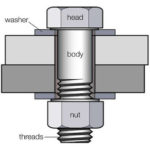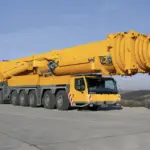
In industrial engineering, fire safety isn’t just a regulatory checkbox — it’s a matter of operational continuity, asset protection, and personnel safety. Among various fire protection systems, passive fireproof boards are a frontline defense used to shield structures, ducts, partitions, and machinery from the spread of high-temperature fires. However, choosing the right fireproof board for your facility is not always straightforward.
This guide compares the most commonly used fire-resistant panel materials and highlights why calcium silicate board has become the preferred option in many high-risk applications.
Common Fireproof Board Options in Industrial Use
1. Gypsum Board
Widely available and inexpensive, gypsum boards are commonly used in commercial building interiors. However, they degrade quickly under sustained high temperatures and are generally unsuitable for industrial or structural fire protection.
2. Rock Wool Boards
Made from basalt or slag, rock wool provides excellent thermal insulation and some fire resistance. However, it lacks structural strength and deteriorates in humid environments, limiting its use in load-bearing or moisture-prone areas.
3. Glass Magnesium Board
These boards offer improved fire resistance and water resistance compared to gypsum but often contain chloride components that can corrode steel over time — a significant concern in long-term industrial infrastructure.
4. Calcium Silicate Boards
The leading solution for high-temperature fire protection in critical facilities, Fireproof Board made from calcium silicate offers a unique blend of structural integrity, lightweight build, and outstanding fire performance. It is non-combustible, can resist temperatures over 1000°C, and maintains mechanical strength even in damp environments.
Key Comparison Metrics
| Feature | Calcium Silicate | Rock Wool | Gypsum | Glass Magnesium |
|---|---|---|---|---|
| Fire Resistance | ★★★★★ (up to 4 hours) | ★★★★☆ | ★★★★☆ | ★★★★★ |
| Mechanical Strength | ★★★★★★★★☆☆ | ★★★★★★★☆☆☆ | ★★★★☆☆☆☆☆ | ★★★★★★★★☆☆ |
| Moisture Resistance | ★★★★★★★☆☆☆ | ★★★★★★☆☆☆☆ | ★★★☆☆☆☆☆☆☆ | ★★★★★★★☆☆☆ |
| Durability | ★★★★★★★★★☆ | ★★★★★★★☆☆☆ | ★★★★☆☆☆☆☆ | ★★★★★★★★★☆ |
| Weight | Medium | Light | Light | Medium |
| Best For | Steel structures, fire ducts, partitions | Insulation | Drywall | Non-load-bearing walls |
Why Calcium Silicate Boards Stand Out
Calcium silicate boards are made from inorganic materials like hard silicate compounds and reinforced fibers. Unlike boards that rely on resin or glue, they contain no combustible binders and do not release smoke or toxins during a fire.
Key advantages include:
- Fire rating up to 4 hours depending on board type and application
- Density options (500–900 kg/m³) for both lightweight and load-bearing use
- Resilience in high humidity—retains over 70% of strength even when saturated
- Compliance with international standards such as ISO 1182 and BS 476-22
Applications span from protecting structural steel and mechanical equipment to partition walls in power plants, tunnels, and offshore facilities.
Final Thoughts
When selecting a fireproof board, engineers must consider not just cost, but also fire rating, structural needs, and environmental exposure. For industrial projects where safety and longevity are top priorities, calcium silicate boards offer a well-balanced, high-performance solution.
Whether you’re retrofitting a facility or designing from scratch, start by evaluating the fireproof materials not just for their technical specs but for their real-world endurance. As industrial environments grow more demanding, so should the materials you trust to protect them.








